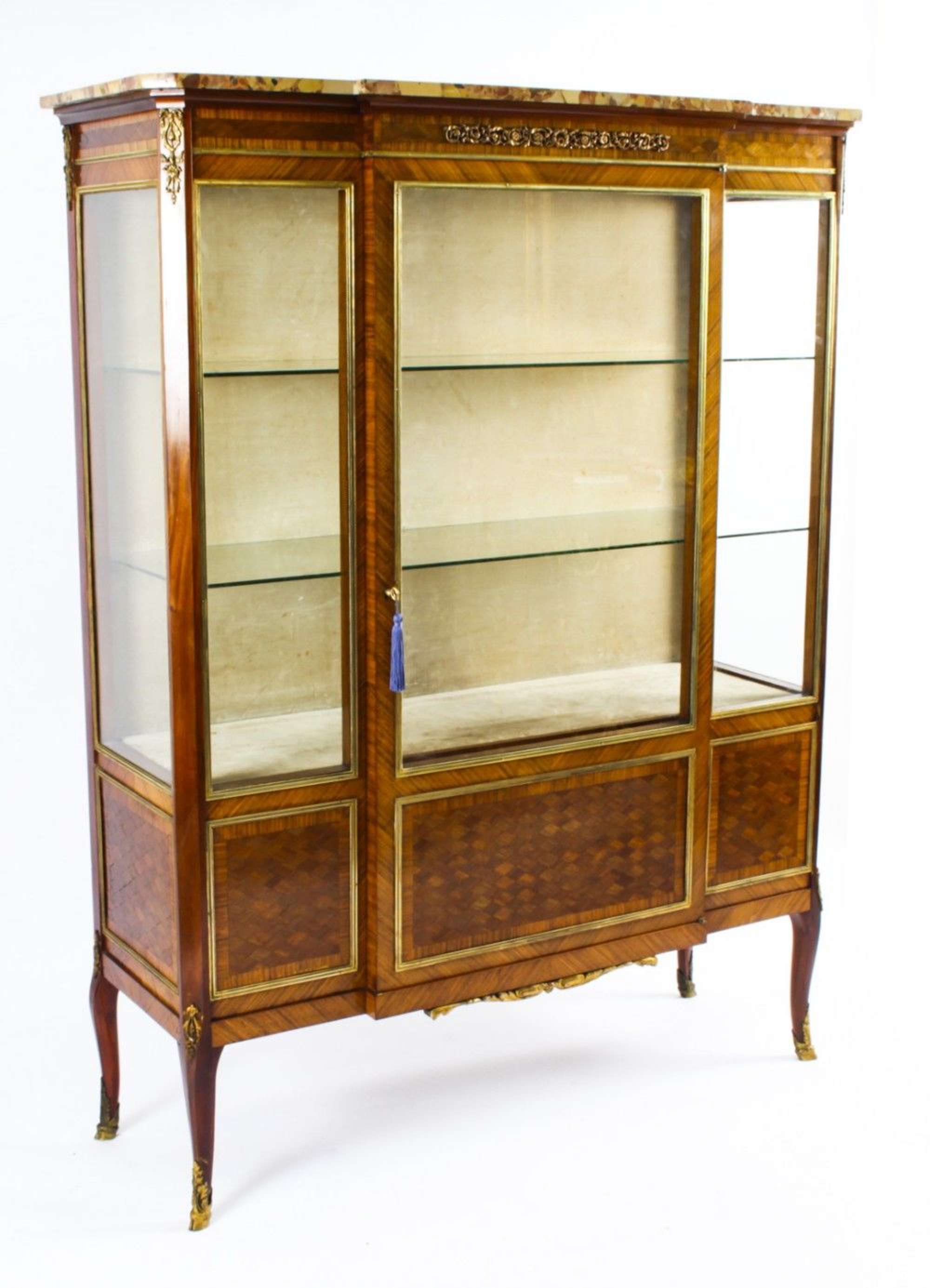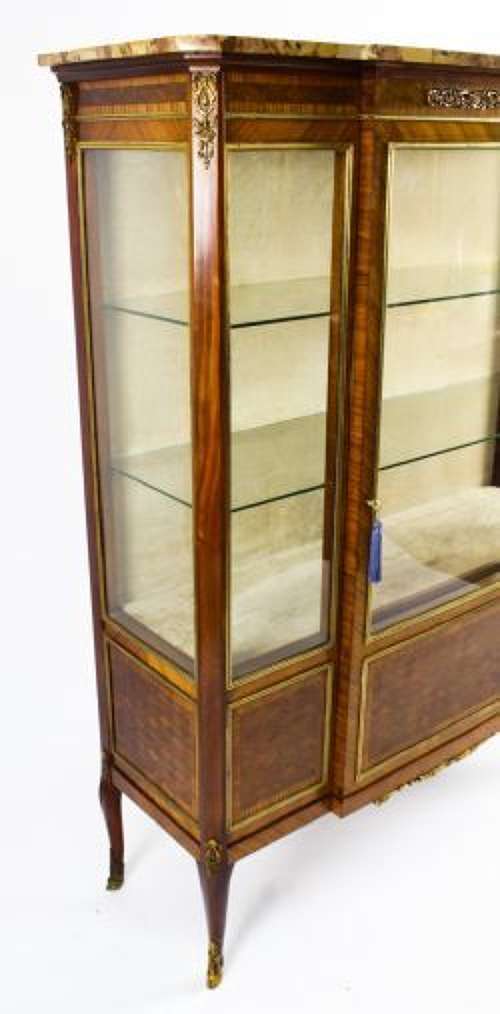Antique French Kingwood Parquetry Ormolu Mounted Vitrine Cabinet 19th C
Delivery Quote Request
Please fill in the form below to request a delivery quote from Regent Antiques.
Contact Regent Antiques
 London, United Kingdom
London, United Kingdom
Simply fill in the below form to get in touch with Regent Antiques regarding this item.
About this item
This is a beautiful antique French Louis Revival kingwood, parquetry and ormolu mounted breakront vitrine, circa 1860 in date.
This beautiful cabinet has exquisite parquetry and crossbanded decoration with gilded bronze ormolu mounts. The shaped breccia marble top and cornice above a glazed panelled door enclosing glass shelves, and raised on elegant shaped ormolu mounted feet.
Complete with working lock and key.
It will add a touch of unparalleled style to your home and is perfect for displaying your collection of silver or porcelain.
Condition:
In excellent condition having been beautifully cleaned and waxed in our workshops, please see photos for confirmation.
Dimensions in cm:
Height 158 x Width 129 x Depth 49
Dimensions in inches:
Height 5 foot, 2 inches x Width 4 foot, 3 inches x Depth 1 foot, 7 inches
Kingwood
is a classic furniture wood, almost exclusively used for inlays on very fine furniture. Occasionally it is used in the solid for small items and turned work, including parts of billiard cues, e.g., those made by John Parris. It is brownish-purple with many fine darker stripes and occasional irregular swirls. Occasionally it contains pale streaks of a similar colour to sapwood.
The wood is very dense and hard and can be brought to a spectacular finish. it turns well but due to its density and hardness can be difficult to work with hand tools. It also has a tendency to blunt the tools due to its abrasive properties.
Parquetry - is a geometric mosaic of wood pieces used for decorative effect. The two main uses of parquetry are as veneer patterns on furniture and block patterns for flooring. Parquetry patterns are entirely geometrical and angularsquares, triangles, lozenges.
The word derives from the Old French parchet , literally meaning "a small enclosed space". Large diagonal squares known as parquet de Versailles were introduced in 1684 as parquet de menuiserie to replace the marble flooring that required constant washing, which tended to rot the joists beneath the floors.
Such parquets en lozange were noted by the Swedish architect Daniel Cronstrm at Versailles and at the Grand Trianon in 1693. Timber contrasting in color and grain, such as oak, walnut, cherry, lime, pine, maple etc. are sometimes employed; and in the more expensive kinds the richly coloured mahogany and sometimes other tropical hardwoods are also used.
Ormolu - Gilt Bronze (from French 'or moulu', signifying ground or pounded gold) is an 18th-century English term for applying finely ground, high-carat gold in a mercury amalgam to an object of bronze.The mercury is driven off in a kiln leaving behind a gold-coloured veneer known as 'gilt bronze'.
The manufacture of true ormolu employs a process known as mercury-gilding or fire-gilding, in which a solution of nitrate of mercury is applied to a piece of copper, brass, or bronze, followed by the application of an amalgam of gold and mercury. The item was then exposed to extreme heat until the mercury burned off and the gold remained, adhered to the metal object.
After around 1830 because legislation had outlawed the use of mercury other techniques were used instead. Electroplating is the most common modern technique. Ormolu techniques are essentially the same as those used on silver, to produce silver-gilt.
Breccia Marble
Is a rock composed of broken fragments of minerals or rock cemented together by a fine-grained matrix that can be similar to or different from the composition of the fragments.
Breccia rock can be any colour and is very colourful. The colour is determined by the colour of the matrix or cement along with the colour of the angular rock fragments.
The word has its origins in the Italian language, in which it means either "loose gravel" or "stone made by cemented gravel".
For thousands of years, the
Internal Ref:
A2087
Date of manufacture : 19th Century
Additional Information
814579 (AB-182477)
W: 129cm (50.8")H: 158cm (62.2")D: 49cm (19.3")
19th Century
![]() London, United Kingdom
London, United Kingdom
Regent Antiques was established in 1980. Born out of a natural love for art and beautiful objects, we have been a highly respected member of the antique fraternity ever since. Industry bodies of which we are a member include LAPADA and CINOA. Over the decades our business has gradually evolved...





























